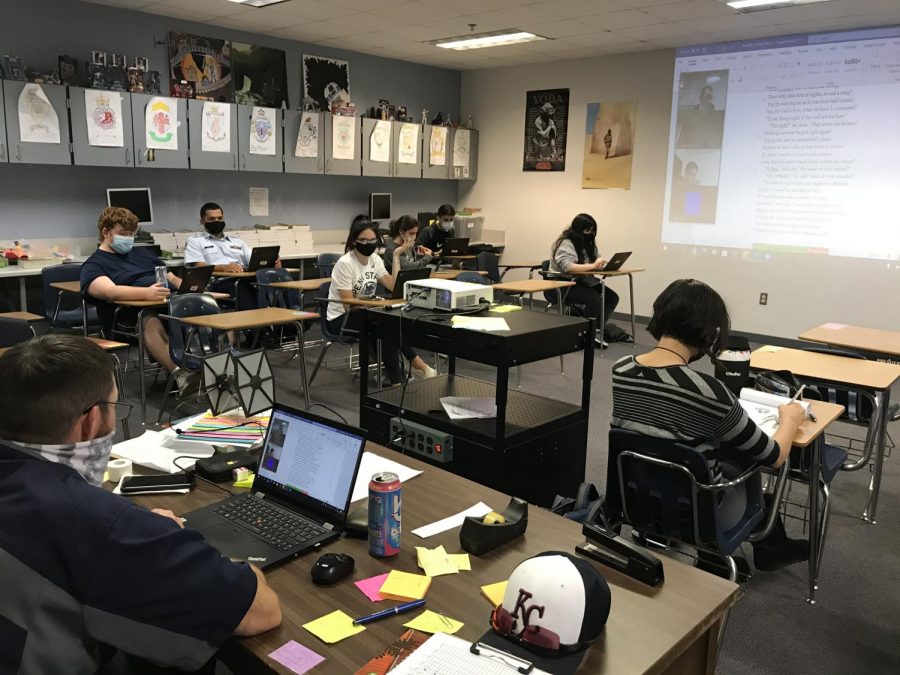Online Learning: The Teacher’s Perspective
Ashley Nunn
Reviewing story text during class, Coach Ivey toggles between questions from both Klein Online and Klein On-Campus students.
November 11, 2020
With many of their students being online, teachers are struggling to teach and keep their students engaged in learning. On top of their usual duties, teachers now also have to learn how to transfer their class into an online format. Many teachers hope the new rules regarding online learning will help students become more involved in their classes.
“My online students did not turn on their cameras for the most part,” World Geography teacher Sarah Johnson said. “This led to less participation. The few that did turn on their cameras were very engaged.”
As of now, online students are required to turn on their cameras to help increase student participation. Students were previously allowed to keep their cameras off except during tests and quizzes.
“I think that having the cameras on should’ve [started at the beginning of the year],” English teacher Matthew Ivey said. “I understand not wanting to infringe on a student’s personal space, but with this being the ‘new normal’, compromises must be made by all. Teachers always have the option to handle this in a fashion they feel is best for their students.”
Another new change is that on campus students aren’t allowed to join Zoom classes if they stay home. They must instead complete their work asynchronously.
“I love being able to have my students work in groups and do hands-on activities together,” English teacher Colleen Taylor said. “None of that can happen this year due to Covid. I use breakout rooms for groups, but it is not the same.”
Breakout rooms allow teachers to split students into groups, enabling some students to work together over an online format. Many teachers have also switched to making homework completely online.
“For the comfort of students and parents, I think allowing students to be either online or on campus was the only solution,” Johnson said. “Everyone staying home would be the best solution, but this was the only realistic decision.”
Unlike students, teachers usually aren’t allowed to be online unless they’ve been exposed to Covid-19. To prevent the spread of the virus at KC, teachers enforce social distancing, wear masks, wipe desks after each class, and sanitize often.
“Being exposed is extremely concerning to me as I have a 20 month old toddler at home, a sister who is immunocompromised, high-risk parents, and my own health to worry about,” Taylor said. “Every day I am stressed about what I touch and who I am around.”
This year, teachers have had to worry about much more than teaching their class. The implementation of online learning caused many new problems. On top of the lack of student participation and other complications, teachers must also do their best to prevent the spread of Covid-19.








